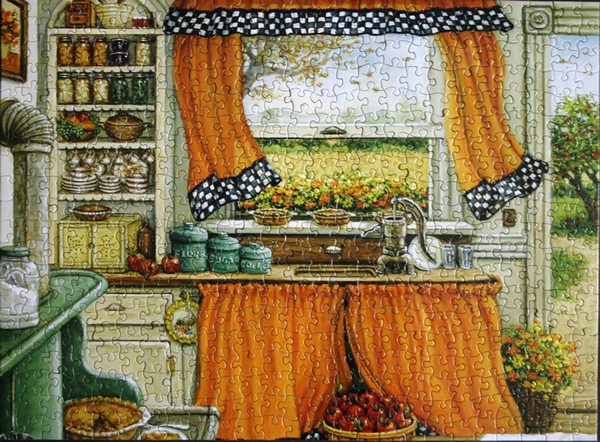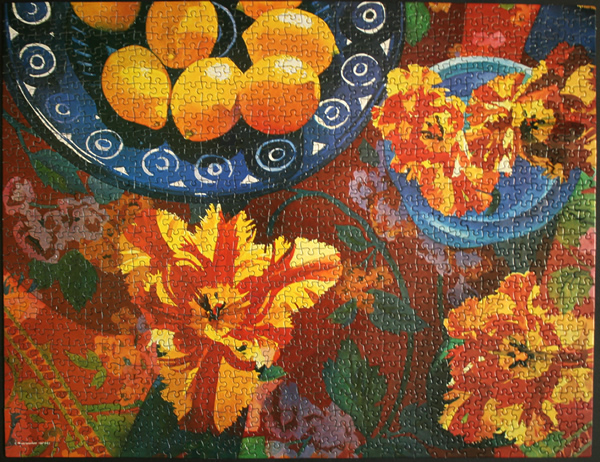
Size: 500 pieces
Dimensions: 45.26cm x 35.56cm
Producer: Sure-Lox, The Canadian Group, Country Kitchen series, 2011, #42225-3
Artist: Janet Kruskamp
Puzzle: The orange curtains and the checkered parts are an easy place to start. Flowers on the window sill, apples, edge of the green table, sky, and tree can follow. The pipe, door frame, garden, and beige cupboard can be finished next, leaving the cans, dishes, and a few other small areas to complete. Very pleasant and staightforward puzzle. It also includes a shortbread cookies recipe and a red puzzle piece cookie cutter.
Baking: In ancient history, the first evidence of baking occurred when humans took wild grass grains, soaked them in water, and mixed everything together, mashing it into a kind of broth-like paste. The paste was cooked by pouring it onto a flat, hot rock, resulting in a bread-like substance. Later, this paste was roasted on hot embers, which made bread-making easier, as it could now be made anytime fire was created.
In ancient history, the first evidence of baking occurred when humans took wild grass grains, soaked them in water, and mixed everything together, mashing it into a kind of broth-like paste. The paste was cooked by pouring it onto a flat, hot rock, resulting in a bread-like substance. Later, this paste was roasted on hot embers, which made bread-making easier, as it could now be made anytime fire was created. [Wiki]

























